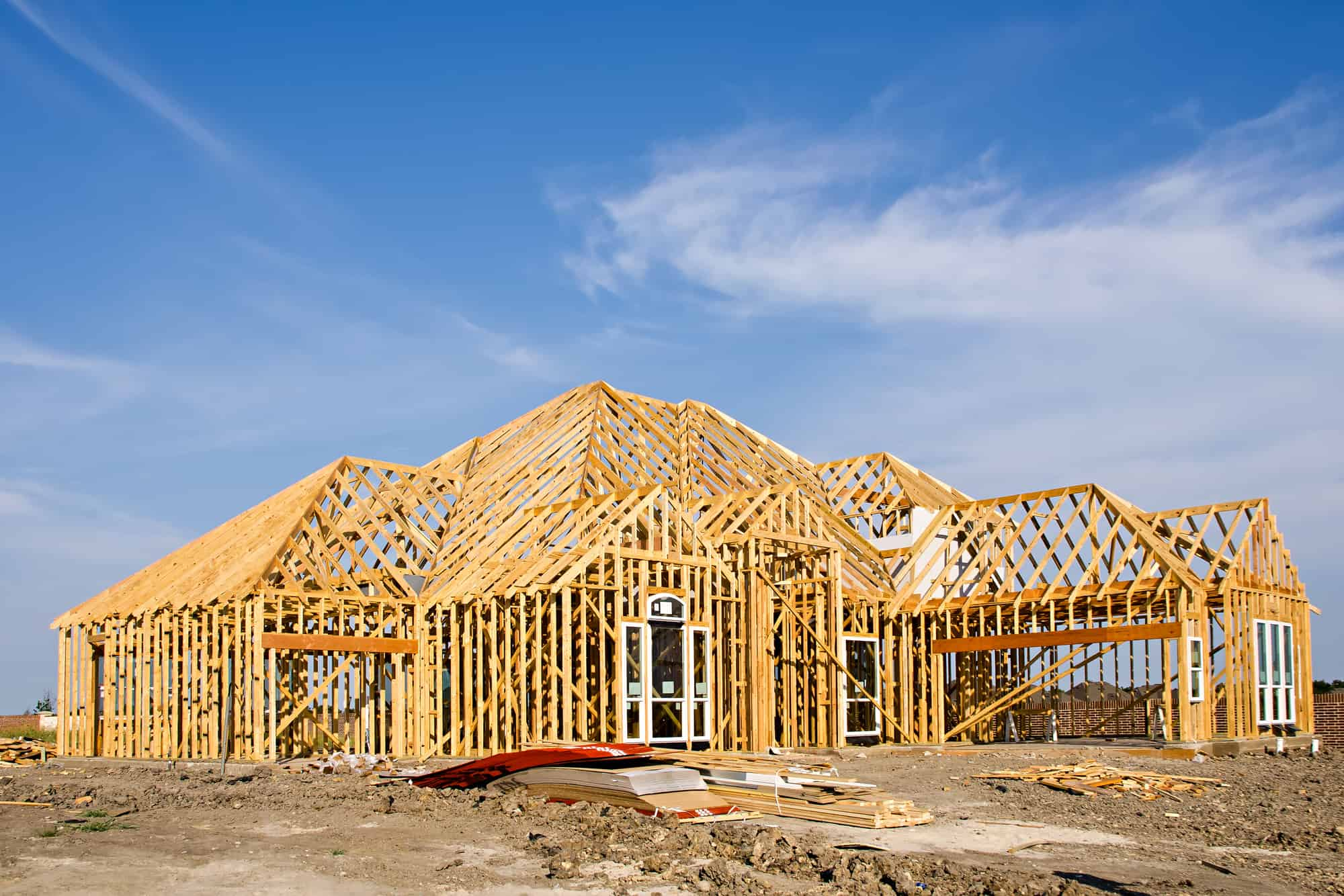Building a house can be both an exciting and a challenging process. While many homeowners are eager to see their dream home come to life, the construction process can take longer than expected.
The length of time it takes to build a house can vary greatly, depending on several factors, including the size and complexity of the house, weather conditions, materials, labor availability, building codes and permits, and site preparation and foundation work.
In this article, we will take a closer look at the various factors that can affect the building time of a house and provide an overview answering how long it really takes to build a house in the United States. Whether you are a first-time home builder or a seasoned pro, this information will help you understand the process and plan accordingly.
Factors That Affect Building Time

If you’re wondering how long does it take to build a house you should know this is a complex and time-consuming process affected by various factors. Some of the most significant factors that can affect the length of time it takes to construct owner-built homes include the size and complexity of the design, the availability of materials and labor, and the local building codes and regulations.
Additional factors, such as weather conditions, site conditions, and the level of customization desired by the homeowner, can also impact the construction timeline for building a house. Understanding these factors and how they can affect the building process is essential for anyone looking to build a new home.
The Size and Complexity of the House
The size and complexity of a house are some of the most critical factors determining how long does it take to build a house. Larger houses with more rooms, square footage, and complex designs will require more time to construct than smaller and simpler houses.
This is because more extensive and complicated houses take more time to plan and build. They also require more materials and more people to build. Also, bigger and more complex houses may need more specialized labor and tools, making the whole building process take longer.
For example, a small, single-story bungalow may take as little as a few months to construct, while a large, multi-story mansion with custom features and finishes can take a year or more to build —the larger and more complex the house, the more intricate and detailed the planning process.
This includes architectural design, engineering, permitting, and inspection, which all can add to the construction timeline. Also, if the house is being built in a remote area, getting the building materials and workers to the site may take longer. All these factors can affect the timeline of the building process.
Weather Conditions
Weather conditions can also play a significant role in determining how long does it take to build a house. Bad weather like heavy rain, snow, and high winds can make working on a construction site hard or impossible. This can slow down progress and make the building project take longer to finish. Additionally, extreme heat or cold can make workers uncomfortable, which can slow the pace of construction.
The weather conditions vary by region. In the Northeast, the building process can take up to 11 months due to the harsh winter conditions, which can delay construction progress.
How Long Does It Take To Build A House Across U.S.
The building process can take eight months in the West and Midwest due to the milder weather conditions. However, the construction process can still be delayed by unexpected weather events such as heavy snowfall, thunderstorms, and tornadoes.
In the South, the building process can take six months, as the weather is generally mild, but there are still challenges, such as hurricanes and floods, that can cause delays.
It’s worth noting that some builders consider the weather when creating a construction schedule. They may schedule specific tasks to be completed during the most favorable weather conditions and may have contingencies in place in case of inclement weather.
Materials and Labor Availability

The availability of materials and labor can also play a significant role in determining how long does it takes to build a house. A shortage of materials or a lack of skilled labor can slow the construction process and prolong the timeline.
While a shortage of specific materials such as lumber, roofing, or siding can cause delays as builders have to wait for these materials to become available. Similarly, a shortage of skilled labor, such as carpenters or electricians, can slow the construction process as builders have to wait for these workers to become available.
The cost of materials and labor can also affect the building time. A rapid increase in material costs or labor rates can increase the cost of the project and cause delays as builders have to adjust their budgets and timelines accordingly.
Furthermore, the construction site’s location can also affect the availability of materials and labor. If the site is located in a remote area, it may take longer to transport materials and labor to the site.
Overall, the availability of materials and labor is an essential factor that can affect the timeline of the building process. Builders should be aware of these challenges and plan accordingly to minimize delays and ensure the project stays on schedule.
Building Codes and Permits
Building codes and permits are other essential factors to consider when determining how long it takes to build a house. Obtaining the necessary approvals from local authorities can add time to the building process. Each city and state has its own set of building codes and regulations that contractors must follow, and obtaining the necessary permits and approvals can be time-consuming.
Before construction can begin, builders must submit plans and designs to the local building department for review. The building department will review the plans to ensure they comply with all local building codes and regulations.
This process can take several weeks or even months, depending on the project’s complexity and the building department’s workload. Once the plans have been reviewed and approved, the builder must obtain the necessary permits before construction can begin.
Furthermore, during the construction process, inspections will be conducted by the local building department to ensure that the work is being done according to the approved plans and that it complies with all building codes and regulations. This process can add to the timeline as the builder needs to schedule the inspections and wait for the results.
Site Preparation and Foundation Work

Site preparation and foundation work are critical steps in the building process and can significantly impact the timeline. If not done correctly, site preparation and foundation work can add weeks or even months to the building time.
Site preparation involves clearing the construction site of debris, trees, or other obstacles and leveling the ground. The process can be time-consuming and delayed by inclement weather or other unforeseen issues. Additionally, if the site requires significant excavation or grading, the process can take longer and add to the building timeline.
Foundation work is another critical step in the building process. The foundation is the backbone of the house, and if not done correctly, it can cause severe structural issues. The foundation is typically made of concrete, and the process of pouring, curing, and finishing the foundation can take several weeks, depending on the size and complexity of the house.
Average Time It Takes To Build A House In The U.S.
The factors influencing the national average construction time can significantly impact the construction of a single-family home. Although the time it takes to construct a new home can vary considerably based on factors such as its location, size, and floor plan complexity, it typically takes six to eight months to complete new construction on custom homes.
The length of time it takes to construct a structure might vary from one region to the next for various reasons, including
- Cost of living
- Labor market conditions
- Building codes and regulations.
The time it takes to remodel an existing home can be less than it takes to construct a brand-new home. However, this varies depending on the scale of the restoration.
Timeline For Building A New Home
Let’s briefly review the timeline for building a new, custom-designed home, from groundbreaking to closing.
Prep and Groundbreaking
This step involves preparing the building site by clearing the piece of land, grading the ground, and digging trenches for utilities. It also includes obtaining any necessary permits and having the property surveyed. The groundbreaking marks the official start of construction.
Foundation and Framing
Foundation involves pouring the concrete or laying the block for the foundation. The type of foundation used will depend on the location, climate, and soil conditions. Once the foundation is set, the framing for the house is constructed. This includes the walls, roof, and floors.
Mechanicals
Mechanicals refers to the systems and equipment that make a building functional and livable. It includes the installation of pipes and fixtures for the water supply and sewage systems, the installation of a furnace or heat pump and ductwork for the heating system, and the installation of wiring and electrical panels for the house.
Insulation and Drywall
Insulation is installed in the walls and attic, and drywall is hung to cover the framing. This step also includes taping and mudding the drywall to prepare it for painting.
Flooring and Paint
Flooring is installed, including hardwood, carpet, tile, or laminate. And the house is painted both inside and outside with primer and one or more coats of paint.
Exterior Finishes
Exterior finishes such as siding, roofing, and windows are installed.
Interior Finishes
Interior finishes such as cabinetry, countertops, and trim are installed. This step also includes installing lighting fixtures and plumbing fixtures.
Driveways and Walkways
Driveways and walkways are poured, and any other hardscaping is completed, like sidewalks, patios, or other outdoor areas.
Clean Up
Construction clean-up is the process of cleaning up the construction site and removing any debris or materials that are no longer needed. This includes things like scraps of lumber, nails, or other construction materials.
Landscaping
Workers put down grass, plants, and other landscaping elements on the property during the landscaping phase. This can include trees, shrubs, flowers, and other greenery. Any outdoor features, such as decks, patios, swings, and playsets, are built.
Walk-Through
During the final walk-through, the homeowner, the contractor, and any necessary inspectors go through the house one last time to make sure everything is done to the homeowner’s satisfaction and that all building codes have been met.
Closing

This step is when the homeowner officially takes ownership of the house, and any outstanding issues or payments are settled with the contractor. This includes signing all necessary paperwork and transferring the title to the property.
Possible Delays and Setbacks
Delays and setbacks happen during new construction projects. The following could set back construction by days, weeks, or months.
- Inclement weather
- Material or labor shortages
- Problems with building rules.
When construction is delayed, it can extend the project’s average completion time and average cost. Future homeowners can prepare to prevent and manage delays by doing the following.
- Planning for schedule problems
- Allotting enough money in the budget for additional expenses
- Being ready for unanticipated hurdles.
Key Takeaways
In summary, the average time it takes to construct a home in the United States is between six and eight months. However, this range is highly variable depending on:
- The house’s size and complexity
- The availability of necessary materials
- Labor
- Local building codes, permits, and site preparation
- Foundation work
If homebuyers and homeowners want their construction projects to proceed as smoothly as possible, they should factor in the possibility of delays and setbacks.
FAQs About How Long Does It Take To Build A House
Here are some FAQs people have about how long it takes to build a house.
How long does it take to build a big house from scratch?
According to data collected by the U.S. Census Bureau in 2021, the typical home construction project lasts seven months. However, you should also consider the time required to have an architect create the necessary blueprints (1–4 months). Once your proposal is approved, it will take another month before construction can begin.
How long does it take to build a simple house?
A small home construction project might last up to six months. However, it may be as short as four months or as long as twelve. Spec homes may be built in as little as four to six months, while custom-built homes may take as long as ten to sixteen months.
Can a house be built in 3 months?
Building a house in three months is an ambitious timeline, and it requires careful planning, a detailed schedule, and a budget. A prefabricated home or build-for-sale home, built in a factory and then assembled on-site, can be built in as little as three months.
Is it cheaper to build or buy a house?
Buying a pre-existing home is typically more cost-effective. The typical cost of a home in the United States is $410,600, which is $28,800 less than the construction cost, according to the National Association of Home Builders.
What is the quickest house to build?
The quickest type of house to build is typically a prefabricated or modular home. These homes are built off-site in a factory and then transported to the building site, where they are assembled.
Because the construction process is completed in a controlled environment and many steps are done simultaneously, prefab and modular homes can be built much more quickly than traditional stick-built homes.
What is the cheapest house to build?
The cheapest type of house to build is typically a small, simple design such as a tiny home, a shed home, or a cob or earth-bermed home. Other options for cost-efficient housing include using shipping containers or repurposing existing structures such as a barn or garage.
How long does it take to frame a 3,000 sq ft house?
Experienced home builders and assistants can typically frame a new, two-story house of 2,000 square feet in about seven days. A 3,000-square-foot contractor-built home will take a team of the same size two to three weeks to frame.
Is it harder to get a loan to build a house?
Getting a loan to build a house can be harder, especially for a first-time home buyer, because the lender is taking on more risk. Banks and other lending institutions may require a higher down payment and may have stricter credit requirements for borrowers looking to build a house.
Construction loans can be more complex than traditional mortgages and require additional documentation, such as architectural plans and contractor bids.
Is it smarter to build or buy a house?
The decision to build or buy a house depends on individual circumstances and priorities. Building custom homes can be more expensive than buying an existing one, but it allows for more control over the home’s design, layout, and features.
The decision to build or buy a house depends on your budget, time frame, and lifestyle needs. It’s important to consider your long-term plans and priorities when deciding.





